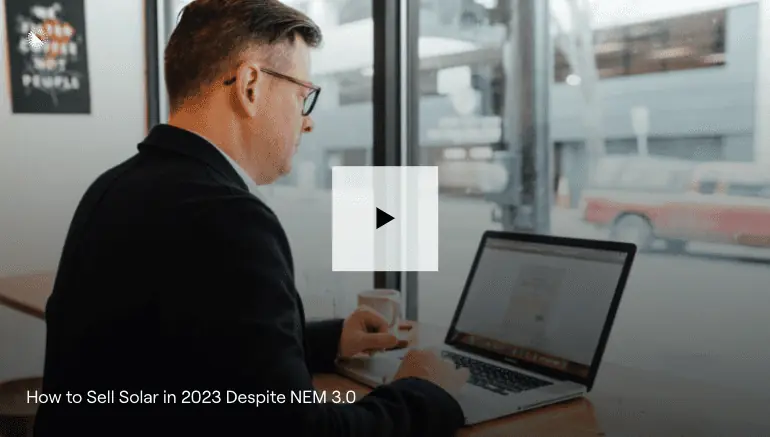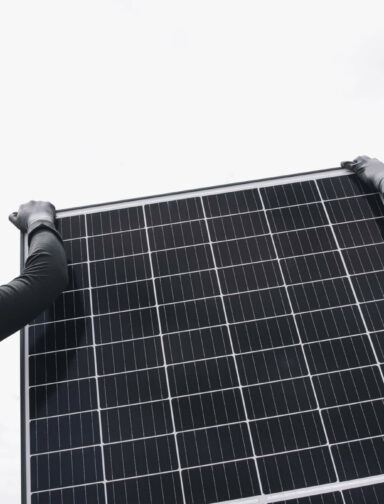April, 2023 UPDATE
The Net Billing Tariff — commonly known as NEM 3.0 — has taken effect. Please visit our NEM 3.0 resource page all the latest information. Here are some quick links for further reading:
- How to sell solar in 2023 despite NEM 3.0
- California Net Billing Tariff (NEM 3.0): frequently asked questions
- Should your PV systems face west with California’s Net Billing Tariff?
- Explaining and modeling California’s Net Billing Tariff (NEM 3.0)
- Contact us to quickly run through any additional questions
On December 15, 2022, the California Public Utilities Commission (CPUC) voted on and passed the Net Billing tariff (NBT, also commonly referred to as NEM 3.0). April 14, 2023 is the last day to submit an interconnection application to enroll into NEM 2.0.

Original blog below
Very little changed between the NEM Proposed Decision published last month (which we analyzed here) and the final version that passed. It still maintains a reduction of 55%-80% on the credits customers receive for the extra solar energy they produce and send to the grid. It also still includes a $14-$16 monthly charge from the mandatory switch to a time-of-use rate for solar customers, uses the Avoided Cost Calculator (ACC) to determine and calculate 576 different NEM credit values in a year, and makes no retroactive changes for NEM 1.0 and NEM 2.0 customers.
Some of the changes that made it into the final version of NBT include:
- A nominal increase in PG&E’s residential and low-income export adder, from 1.8 to 2.2 cents and 8.7 to 9.0 cents respectively to correct for a data error in the Proposed Decision. Adders will still step down 20% each year until they reach zero.
- Commercial customers enrolling into NBT / NEM 3.0 during the first five years will now get a nine-year lock-in period, instead of five, i.e., their hourly export values for the first nine years are locked-in, using the first nine years of forecasts in the ACC. Commercial customers still do not receive any ACC adders.
- An expansion of the definition of “low-income” customers; single family residential customers in disadvantaged communities and tribal land will now be eligible to receive the higher export rate adder.
- All solar customers submitting applications to get onto NEM 2.0 must “submit final building permit sign off and electrical clearing by the authority having jurisdiction (AHJs)” within three years, i.e., their residential or commercial PV systems must be built within three years of the application date to keep NEM 2.0 eligibility.

Comparing NEM 2.0 and the Final Net Billing Tariff With Aurora
We ran (workaround) simulations in Aurora of a typical residential solar installation in PG&E, SCE, and SDG&E territories — the territories impacted by the change — to help provide context on the effects of the Net Billing tariff.
We modeled two systems:
- An ideally-oriented, unshaded system to show the best possible payback periods
- A larger system with a lower Total Solar Resource Fraction (TSRF) at 80% that represents more common installations that, for example, don’t have a south-facing roof or have shade losses
Under NBT, the payback period for ideal systems is close to 7 years, while the payback period for typical systems is roughly 8.5 years — 1.5 years longer. In both cases, for a near 100% energy offset design, the payback period increases by 1.8 to 2.7 years.

Notes: Pre-solar customer and the post-solar NEM 2.0 uses schedules E-TOU-C, TOU-D-4-9PM, and TOU-DR1 for PG&E, SCE, and SDG&E, respectively. Post-solar NBT uses E-ELEC, TOU-D-PRIME, and EV-TOU-5 as specified by the final decision. The payback here is the “time to payback” — the time it takes to break even given all cash flows, rate escalation, panel degradation, etc. — and it differs slightly from the CPUC’s “simple payback” which only uses year-1 bill savings.
Our help center article details how to approximately model Net Billing tariff. For more NEM related resources, bookmark our Net Billing Tariff (NEM 3.0) resource center — we will be updating this page regularly in the months to come.
Want to learn more about how NEM changes may affect your business? Schedule a personalized, no-pressure demo to get all your specific questions answered.



